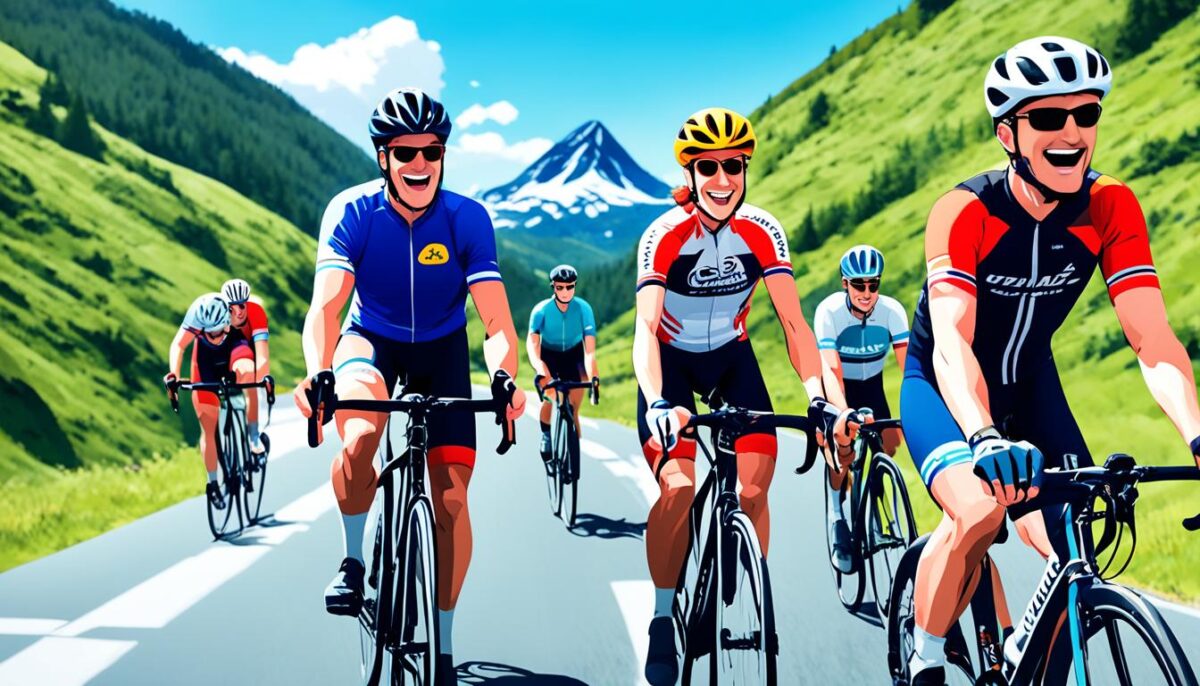When it comes to our cycling experience, the debate between riding solo and joining a riding group often arises. Both options present unique advantages and challenges, making it essential for us to understand the pros and cons of cycling in each scenario. According to a study by the League of American Bicyclists, those who enjoy biking alone frequently report heightened autonomy and moments of personal reflection during their rides. On the other hand, research from the Outdoor Industry Association highlights how group rides can foster deeper social bonds and friendships within the biking community. Ultimately, our choice between riding solo and riding with a group should reflect our individual preferences and goals.
The Joys of Riding Solo
Riding solo brings a unique sense of liberation and excitement. We relish the opportunity to make decisions unbound by the preferences or timelines of others. This gives us the chance to fully embrace personal freedom cycling, transforming each ride into a personalized adventure.
Finding Personal Freedom
When we cycle alone, we enjoy the wind in our hair and the open road ahead. The joy of making our own choices is unparalleled. We can choose our routes and spontaneity is part of the allure. Each journey can become a reflection of our desires, free from group dynamics and expectations.
Setting Your Own Pace
Setting pace while biking is one of the greatest advantages of riding solo. We dictate how fast to travel, allowing ourselves to stop whenever we wish. Taking breaks to absorb the scenery or simply relax makes the experience more enjoyable. Research indicates that this tailored experience adds depth to our cycling adventures.
Exploring New Paths Alone
Exploring alone on a bike often leads us to discover hidden trails and unique landscapes. The freedom to venture off the beaten path fosters a deeper connection with our surroundings. As we navigate personal routes, we open ourselves to unexpected sights and experiences, highlighting the benefits of solo rides.
| Benefit | Description |
|---|---|
| Personal Freedom | Make choices based on individual preferences without compromise. |
| Self-Paced Riding | Control speed and timing, enhancing the enjoyment of each ride. |
| Adventure & Discovery | Open up to hidden paths and unique landscapes away from crowded routes. |
| Introspection | Use solo rides as a time for personal reflection and mental clarity. |
Riding Solo vs. Riding Group: What Works for You?
When we consider how to approach our cycling adventures, understanding our personal riding style helps us frame the options available. Whether we prefer the independence of solo rides or the camaraderie of group outings makes a significant difference in our experiences. Sequentially, evaluating our cycling goals and preferences for group riding becomes crucial in deciding between solo and group rides.
Understanding Your Riding Style
Recognizing our riding tendencies is key in tailoring our experiences. Do we favor the thrill of speed, the enjoyment of a casual ride, or the social interactions that come from being with others? By identifying these preferences, we can make informed choices about which type of rides best align with our personal riding style.
Evaluating Your Goals and Preferences
When setting our cycling goals, we must reflect on what we hope to achieve. Are we seeking solitude to enjoy nature and reflect, or do we crave the energy of being with like-minded individuals? This self-assessment aids in choosing the right experiences that resonate with our objectives as cyclists. A survey from Bicycling magazine indicated that a considerable percentage of cyclists adjust their options based on personal fitness goals and social desires.

The Benefits of Riding with a Group
Participating in group rides can significantly enhance our cycling experience, offering both social interaction and safety advantages. Embracing community biking helps us build strong connections while reaping the riding with a group benefits that come with a supportive environment.
Building Community and Friendships
Group rides provide an excellent platform for cultivating cycling friendships. As we cycle together, opportunities arise to share stories, tips, and laughter, deepening our bonds. Engaging in this camaraderie not only improves our riding skills but brings joy to the journey, making it a rewarding experience. Through community biking, we learn from one another and reinforce our passion for cycling.
Safety in Numbers
Riding with a group greatly enhances our safety on the road. When multiple cyclists share the path, our visibility to drivers increases. This collective presence allows us to look out for each other, sharing vital safety tips for group rides. In challenging conditions or busy traffic, having a group can provide reassurance and a sense of security, reassuring us as we navigate our routes together.

Weighing the Drawbacks of Each Option
When considering the pros and cons of cycling options, it’s essential to reflect on the drawbacks of solo riding alongside the disadvantages of group rides. While riding solo allows us to enjoy personal freedom and explore at our own pace, it can also lead to feelings of loneliness, particularly on long journeys, as noted by the Cycling Research Institute. This solitude can sometimes turn our adventure into a solitary challenge rather than the enjoyable experience we seek.
On the other hand, group rides can foster camaraderie and provide security, yet they often come with their own set of complications. The Adventure Cycling Association highlights issues related to differing skill levels and paces which can cause frustration among group members. Such disparities may deter us from fully appreciating the ride, as we find ourselves compromising on speed and direction instead of enjoying the thrill of cycling together.
Moreover, as emphasized by the League of American Bicyclists, while we may feel safer in a group, these rides often require us to make concessions in route selection and timing. This can detract from the pure enjoyment of cycling, transforming a leisurely outing into a series of negotiations. By weighing these drawbacks against the unique benefits of our riding preferences, we can make more informed decisions about how we choose to experience our cycling adventures.



